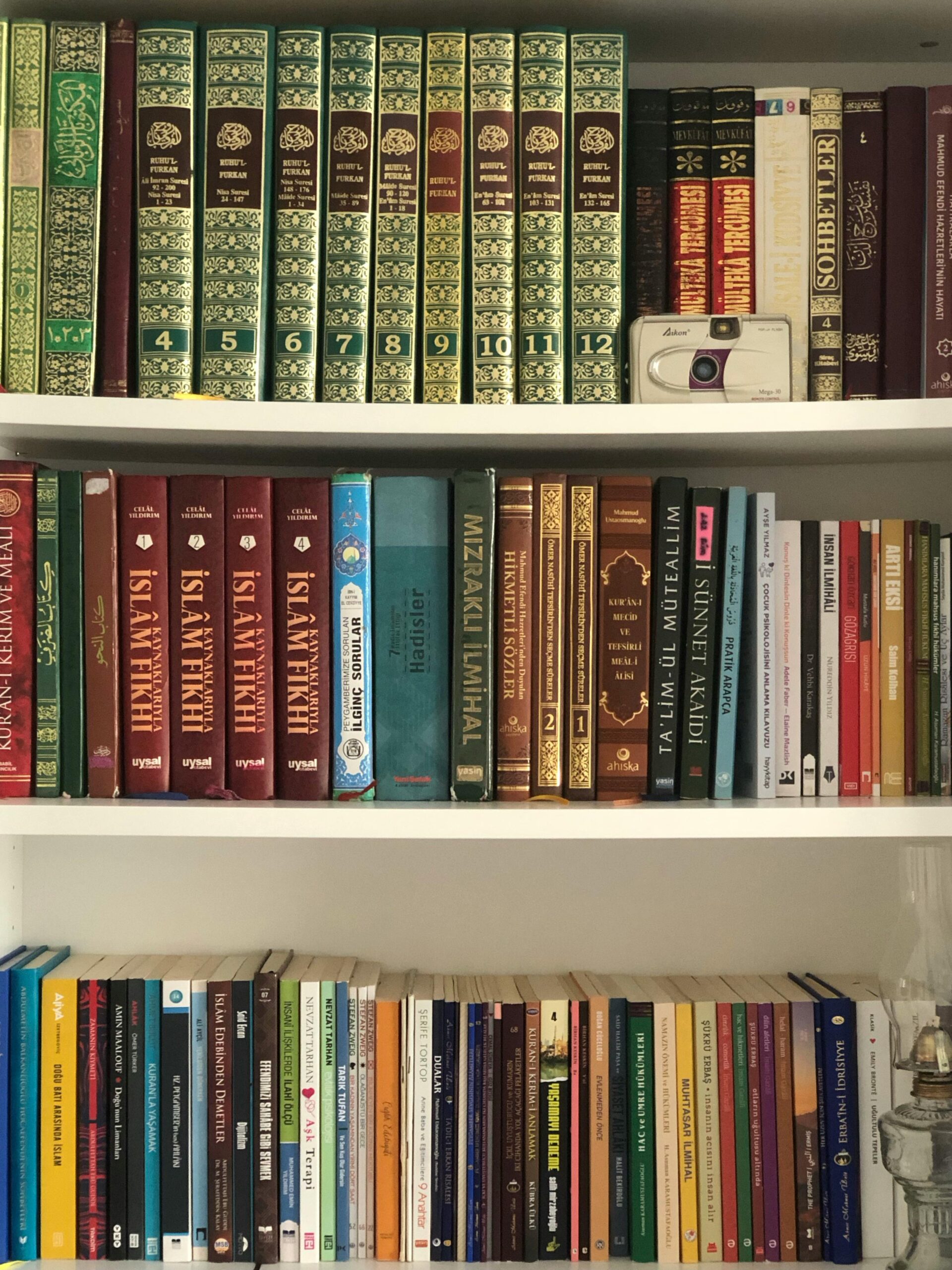The Complete History of Sihah al-Sitta
Introduction
Sihah al-Sitta (Arabic: الصحاح الستة, “the Authentic Six”) refers to the six most widely accepted hadith collections in Sunni Islam. Regarded as the second most important source of guidance after the Qur’an, these compilations not only preserve the sayings and practices of the Prophet Muhammad (ﷺ) but also form the foundation of Islamic jurisprudence and theology. The six canonical works are:
-
Sahih al-Bukhari
-
Sahih Muslim
-
Sunan Abu Dawud
-
Sunan al-Tirmidhi
-
Sunan al-Nasa’i
-
Sunan Ibn Majah
Together, they have shaped Sunni scholarly tradition for over a millennium and continue to be a critical reference for students, jurists, and scholars worldwide.
Historical Background
Early Hadith Preservation
In the first century of Islam, the companions of the Prophet memorized and orally transmitted his sayings (ahadith) alongside the Qur’anic revelations. The immediacy of the Prophet’s presence and the relatively small size of the early Muslim community meant that preserving his teachings was largely a matter of memorization and personal transmission.
Following the Prophet’s death, however, the rapid expansion of the Islamic empire and emerging sectarian differences highlighted the risk of misattribution and fabrication. Early generations of Muslims—concerned with safeguarding the authentic Sunnah—began to compile hadiths into written collections. This formative period laid the groundwork for later scholars to establish strict methodologies for evaluating narrators (isnād) and textual content (matn).
The Process of Canonization
Methodology of Hadith Authentication
The science of hadith developed as scholars instituted rigorous criteria to authenticate reports. Two primary components were scrutinized:
-
Isnād (Chain of Transmission): Scholars examined each narrator’s character, memory, and reliability, ensuring that the chain linking the report to the Prophet was uninterrupted.
-
Matn (Text of the Hadith): The content was evaluated for consistency with the Qur’an, established Sunnah, and rational coherence.
This systematic approach allowed scholars not only to identify authentic narrations but also to distinguish between various levels of reliability—from sahih (sound) to da’if (weak) and even fabricated reports.
Emergence of the Canon
Although individual collections had been compiled in the early centuries of Islam, it was not until the 10th century that a consensus began to emerge among Sunni scholars. The two most renowned collections—Sahih al-Bukhari and Sahih Muslim—became the foundational texts due to their strict criteria for authenticity. Later, scholars such as Ibn al-Qaisarani (in the 11th century) and Muhammad ibn Tahir al-Maqdisi formalized the grouping of these six works into what is now known as Sihah al-Sitta.
The Six Canonical Collections
Sahih al-Bukhari
Compiled by: Imam Muhammad ibn Isma‘il al-Bukhari (d. 870 CE)
Overview:
-
Compilation Process: Al-Bukhari traveled extensively for 16 years to collect hadith from various centers of knowledge. He is reputed to have examined over 600,000 narrations, selecting approximately 7,000 (including repetitions) that met his strict criteria.
-
Structure and Content: Organized into 97 books (chapters), Sahih al-Bukhari covers every aspect of the Prophet’s life—from theology and law to etiquette and spirituality.
-
Scholarly Impact: Regarded by Sunni Muslims as the most authentic compilation after the Qur’an, it set the gold standard for hadith methodology.
Sahih Muslim
Compiled by: Imam Muslim ibn al-Hajjaj (d. 875 CE)
Overview:
-
Compilation Process: Like Bukhari, Imam Muslim was methodical in his approach. He sifted through hundreds of thousands of hadith and selected around 7,000 (including repetitions), of which approximately 3,000 are unique.
-
Characteristics: Sahih Muslim is noted for its organization by thematic topics and the relative brevity of its isnād, focusing on the core text and authenticity.
-
Reputation: Alongside Sahih al-Bukhari, it forms the duo known as the “Sahihayn” (the two sound collections) and is central to Sunni legal and theological discourse.
Sunan Abu Dawud
Compiled by: Abu Dawud Sulayman ibn Ash’ath al-Sijistani (d. 888–889 CE)
Overview:
-
Compilation Process: Abu Dawud traveled widely, gathering a vast corpus of narrations—reportedly over 500,000—but ultimately included around 4,800 hadiths that he deemed authentic or nearly authentic.
-
Focus: His collection places particular emphasis on hadiths relevant to legal rulings, making it an indispensable resource for jurists.
-
Methodology: Although he sometimes included narrations with minor weaknesses (while noting them), his work remains highly valued for its legal insights.
Sunan al-Tirmidhi
Compiled by: Abu ‘Isa Muhammad ibn ‘Isa al-Tirmidhi (d. 892–893 CE)
Overview:
-
Compilation Process: Al-Tirmidhi’s work took around 20 years to compile. His collection is distinctive for including commentary on the reliability of hadith and noting differences among narrations.
-
Content: Divided into 40 to 50 books (depending on the edition), it not only presents hadith but also provides insight into their legal and doctrinal implications.
-
Legacy: His critical approach influenced later hadith scholars and remains a key text in hadith studies.
Sunan al-Nasa’i
Compiled by: Abu ‘Abd al-Rahman Ahmad ibn Shu‘ayb al-Nasa’i (d. 915 CE)
Overview:
-
Compilation Process: Al-Nasa’i’s collection is noted for its high standards, and he carefully differentiated between stronger and weaker narrations.
-
Content and Structure: Often divided into 52 books, Sunan al-Nasa’i contains roughly 5,700 hadiths (including repetitions). It is particularly valued for its relatively stringent criteria compared to other collections.
-
Scholarly Reception: Despite a few narrations being critiqued for slight weaknesses, it is widely accepted as one of the most authentic collections in the Sihah al-Sitta.
Sunan Ibn Majah
Compiled by: Ibn Majah (d. 887–889 CE)
Overview:
-
Compilation Process: Ibn Majah compiled his work over several years while traveling among various centers of learning. His collection includes about 4,300 hadiths.
-
Controversies: Unlike the other five, Sunan Ibn Majah has been the subject of debate among scholars because it contains a higher proportion of weak and disputed narrations. Some jurists and scholars prefer to substitute it with other compilations such as the Muwatta of Malik in discussions of authenticity.
-
Role: Nonetheless, it is traditionally included in the canonical six because its content complements that of the other collections, providing a broader spectrum of Prophetic traditions.
Scholarly Debates and Criticisms
Throughout history, while the Sihah al-Sitta have been universally revered among Sunni scholars, there have been nuanced debates regarding:
-
Chain Criticism: Differences in isnād among the collections have led some scholars to rank Sahih al-Bukhari and Sahih Muslim above the others.
-
Inclusion of Weak Narrations: Sunan Ibn Majah, in particular, is scrutinized for including a number of narrations that do not meet the highest criteria of authenticity. Some jurists argue for its cautious use.
-
Methodological Variations: Each compiler adopted slightly different methods for evaluating narrators and texts, which has influenced later interpretations and the hierarchy of reliability in hadith studies.
Legacy and Impact
Influence on Islamic Jurisprudence and Theology
The Sihah al-Sitta have played an indispensable role in shaping Sunni Islamic law and theology:
-
Legal Framework: Their hadiths form the basis of fiqh (Islamic jurisprudence) in various Sunni schools of thought. Jurists rely on these texts to extract legal rulings and derive ethical guidelines.
-
Doctrinal Consensus: The rigorous methodologies developed during their compilation helped establish a consensus on what constitutes authentic Prophetic tradition.
-
Educational Tradition: For centuries, these collections have been central to the curriculum in Islamic seminaries (madrasas) and have influenced generations of scholars.
Continuing Relevance
In modern times, the Sihah al-Sitta remain pivotal not only for traditional scholarship but also for contemporary studies in Islamic law, history, and ethics. Digitization projects and research initiatives continue to enhance access to these texts, ensuring that their legacy endures.
Conclusion
The complete history of Sihah al-Sitta is a testament to the diligence and scholarly rigor of early Muslim traditionists. Emerging from the urgent need to preserve the authentic teachings of the Prophet Muhammad (ﷺ), these six works were compiled using innovative methodologies that continue to influence Islamic scholarship today. Despite debates and minor criticisms—particularly regarding Sunan Ibn Majah—the Sihah al-Sitta remain the cornerstone of Sunni hadith literature, guiding Muslims in matters of law, belief, and daily conduct.
For further reading and exploration of the nuances of these compilations, sources such as academic studies, encyclopedic entries, and dedicated hadith research websites provide valuable insights.

